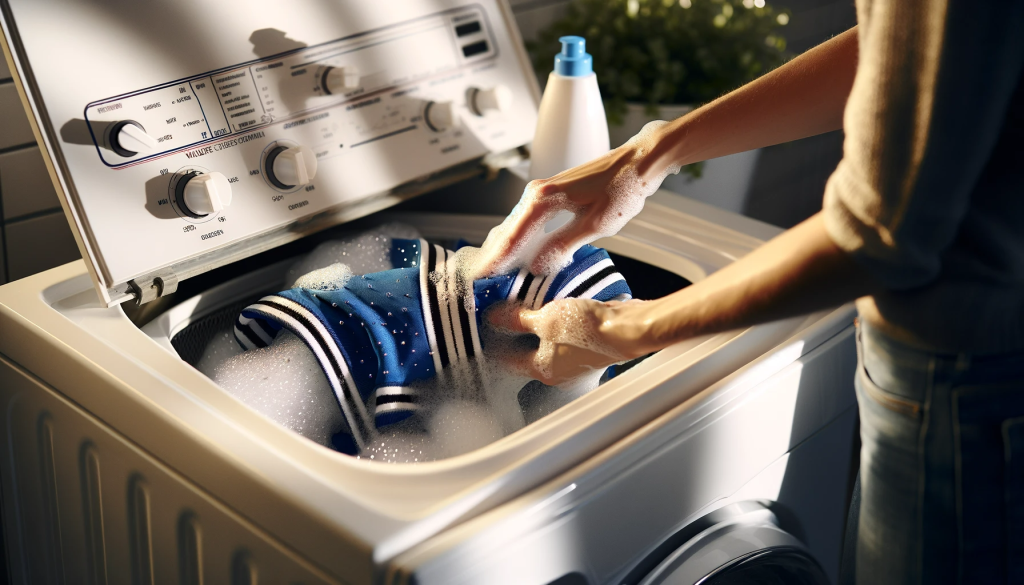Before you toss all your clothes into the dryer without a second thought, consider the potential consequences for your whites. While it might seem convenient to dry everything together, the risk of dye and lint transfer is real, potentially leaving your white garments looking dull and fuzzy. For those who value their wardrobe’s appearance, it’s worth checking out InktasticMerch for quality fabric care tips and solutions.
For best results, it’s advisable to dry white clothing separately from dark-colored garments. The heat during the drying cycle can lead to dye transfer from darker items to white ones.
You’ve likely heard the cautionary tale about washing white clothes with dark ones—and with good reason. Color bleeding is a common issue, particularly when using hot water . But what about drying? Should you take the extra step to separate your whites from darks before tossing them in the dryer?
Many people opt for convenience, cramming all their laundry—clothes, towels, sheets —into the dryer without a second thought. However, this approach can be detrimental to your white items. The dryer’s heat can exacerbate dye transfer, especially from newer colored clothes.
This article delves into how colors can transfer in the dryer, identifies the types of fabrics that are most susceptible, and provides practical tips for sorting your laundry effectively.
Should You Dry White and Dark-Colored Clothes Together?
To avoid dye transfer, it’s best to keep whites and colors apart in the dryer. When white items come into contact with dark fabrics, there’s a risk that the white garments will absorb colors from the dyes present in the darker items—particularly if those pieces are new and haven’t been washed yet. Even if there’s no visible bleeding, your whites may gradually take on a grayish hue due to residual dyes.
Moreover, drying whites alongside dark items can lead to lint transfer, leaving you with an unwanted layer of dark fuzz on your clean white clothes.
A good rule of thumb is to sort your laundry for drying just as you would for washing. This means separating whites from darks and delicate items from sturdier ones like towels and sheets.
But what if time is of the essence on laundry day ? If you absolutely need to dry everything together, consider using a low heat setting. Alternatively, you can allow your white items to air dry while placing the rest in the dryer. Interestingly, sunlight has the added benefit of naturally brightening white fabrics.
Understanding Dye Transfer in the Dryer
The fundamental reasons behind color bleeding in the dryer are dye stability and heat.
New or brightly colored fabrics often contain unstable dyes, which may not be entirely rinsed out during manufacturing. When exposed to high dryer temperatures, the fibers in these fabrics expand, creating an opportunity for the excess dye to bleed onto your lighter clothing.
In summary, exercise caution when drying items with strong colors, such as a red sweater, alongside white garments.
Which Fabrics Are Most Prone to Color Transfer in the Dryer?
Here are five types of fabrics that have a higher likelihood of dye transfer during the drying process.
1. New or Unwashed Garments
Items that are new or haven’t been washed yet may retain excess dye that hasn’t been properly set, increasing the likelihood of bleeding in the dryer.
2. Bright and Dark-Colored Fabrics
Garments in dark shades, particularly red and orange, as well as bright pastels, can have concentrated dyes, amplifying the risk of color transfer onto lighter fabrics, especially when wet.
3. Delicate Fabrics
Fabrics like silk, rayon, and synthetic blends are more prone to color bleeding and transfer, as they tend to be more sensitive to heat and moisture.
4. Items with Prints or Patterns
Clothing featuring printed designs or intricate patterns may have concentrated dye areas that are likely to bleed onto other items in the dryer.
5. Mixed Fiber Fabrics
Fabrics woven from different fibers, such as blends of cotton and polyester, may exhibit varying degrees of colorfastness, resulting in potential color transfer issues.
PROTECT YOUR GARMENTS WITH THE RIGHT SOLUTIONS
Regardless of care instructions, utilizing the right laundry tools can help maintain the quality and freshness of your garments—without the guesswork.
EXPLORE ESSENTIAL LAUNDRY PRODUCTS
Mixing White Towels with Dark-Colored Clothes: Is It Okay?
While you *can* dry white towels alongside dark clothing, it’s not the best practice. Just like with garments, towel fabrics can also absorb dyes, compromising their brightness over time.
If you care about keeping your white towels looking pristine, it’s wiser to wash and dry them together with other white laundry.
Enhancing Your Laundry Experience with Dryer Balls and Sheets
Separating whites from darks is only one part of optimizing your drying process. Adding dryer sheets or dryer balls can significantly enhance the outcome of your laundry.
Laundry sheets provide added convenience—they prevent static cling while infusing your laundry with delightful fragrances like Australian Sandalwood , Italian Bergamot , Egyptian Rose, and others.
If you prefer a more natural approach to combat static and enhance fluffiness, dryer balls are an excellent alternative. Crafted from tightly compressed New Zealand wool, Laundry Balls can cut down drying time by as much as 50% while keeping your clothes soft and fresh.
Whether you’re team sheets or team balls, both options can enhance your laundry day experience.
For more tips and insights on keeping your garments looking their best, explore our Blog and discover a wealth of laundry wisdom and beyond.



